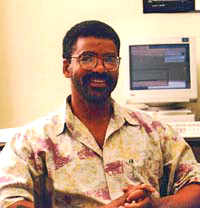Skip Navigation
Search

Roy A. Lacey
Professor
B.S. University of the West Indies, 1978
Ph.D. State University of New York at Stony Brook, 1987
Research Fellow, Commissariat a l'Energie Atomique (CEA) at the Centre d'Etudes Nucleaires
de Saclay, France, 1988-1989
Research Fellow, Centre National de la Recherche Scientifique (CNRS) GANIL, Caen,
France, 1989-1990
Research Fellow, National SuperConducting Cyclotron Laboratory (NSCL),
Michigan State University, 1990-1991
459 Chemistry
Phone: (631) 632-7955
Email: roy.lacey@stonybrook.edu
